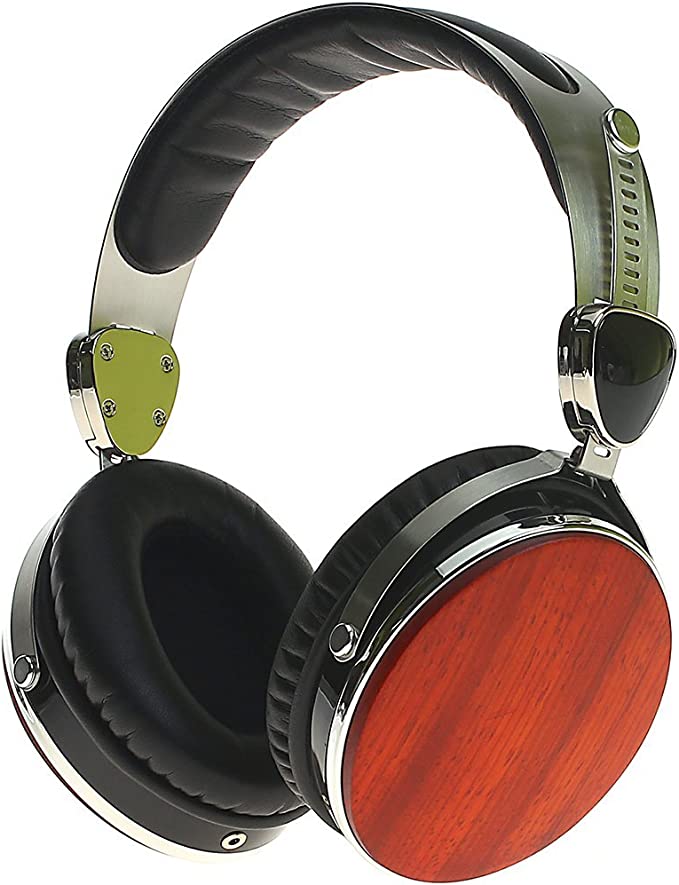iBasso IT01X Earbuds: Powerful Sound in a Portable Package
Update on June 20, 2025, 2:54 p.m.
There’s a unique kind of magic in personal audio, a delightful paradox where vast, immersive soundscapes are conjured within the tiny confines of devices nestled in our ears. The iBasso IT01X in-Ear Monitor (IEM) is one such contender in this fascinating world, promising “professional-quality sound” and “booming bass.” But beyond the marketing phrases, what truly makes these little instruments sing, or sometimes roar? Our journey today is to peel back the layers, to explore the captivating science and meticulous engineering that transform simple electrical signals into the music that moves us, using the IT01X as our guide.

The Heartbeat: Understanding the Dynamic Driver’s Enduring Power
At the core of many audio transducers, from colossal stadium speakers to the diminutive IT01X, beats the heart of a dynamic driver. It’s a technology that’s both elegantly simple and remarkably effective, a true titan of audio reproduction. Picture this: a delicate membrane, the diaphragm, is attached to a coil of wire known as the voice coil. This assembly sits within a magnetic field created by a permanent magnet. When your music player sends an electrical audio signal – a fluctuating current – through the voice coil, it generates its own tiny, rapidly changing magnetic field. This new field interacts with the permanent magnet, pushing and pulling the voice coil, and with it, the diaphragm. This rapid vibration of the diaphragm slices through the air, creating pressure waves – the very sound waves that travel to your eardrums and are interpreted by your brain as music. It’s a miniature symphony of physics, all happening thousands of times per second.
The iBasso IT01X employs a single dynamic driver, a configuration lauded for its ability to produce a coherent sound across the frequency spectrum. Dynamic drivers are particularly renowned for their prowess in reproducing low frequencies, the visceral punch of a kick drum or the deep rumble of a bass guitar. iBasso leans into this strength, highlighting the IT01X’s capacity for “booming bass” and “powerful audio.” The product description also mentions a “specially designed interior microphone delivers on the best sound resolution, speed, bass, and audio dynamics.” We’ll revisit this intriguing, if slightly unorthodox, phrasing later, but it hints at careful internal acoustic tuning designed to shape and refine the raw power of its dynamic engine.

The Beryllium Revelation: When Material Science Crafts Crystalline Sound
If the dynamic driver is the heart, then the diaphragm is its soul. The characteristics of this vibrating membrane are paramount to the quality of sound produced. Imagine trying to create a sharp, clear sound by hitting a loose, heavy blanket versus a taut, lightweight drum skin. The difference is profound. Ideally, a diaphragm should be incredibly light, allowing it to respond instantaneously to the nuances of the audio signal, and extraordinarily stiff, so it moves as a perfect piston without bending, flexing, or creating its own unwanted resonances.
This is where material science makes a dramatic entrance, and in the case of the iBasso IT01X, it’s with “revolutionary beryllium-plating.” Beryllium is an elemental marvel, boasting one of the highest stiffness-to-weight ratios of any known material. It’s significantly lighter than aluminum or titanium yet considerably stiffer. What does this mean for your music?
Let’s consider the quest for speed and accuracy. The lower the mass of the diaphragm, the less inertia it has. This allows it to accelerate and decelerate with incredible speed, faithfully tracking the most complex and rapid changes in the audio signal. This is what audio engineers call “transient response.” It’s the ability to reproduce the sudden attack of a plucked string, the crisp snap of a snare drum, or the subtle decay of a piano note with lifelike precision. A beryllium-enhanced diaphragm, due to its lightness, excels here. Think of it like comparing a world-class sprinter to a heavyweight lifter in a 100-meter dash – the lighter, more agile athlete will respond much faster.
Then there’s the battle against distortion. When a diaphragm isn’t stiff enough, especially at higher volumes or when trying to reproduce complex, high-frequency sounds, it can start to flex and warp instead of moving uniformly. This phenomenon, known as “break-up distortion,” adds unwanted sonic artifacts, clouding the music and robbing it of clarity. Beryllium’s remarkable stiffness helps to push this break-up point to much higher frequencies, often beyond the range of human hearing, ensuring that the sound remains clean, articulate, and free from harshness. The result is an increase in perceived detail and resolution, as if a veil has been lifted from the music. iBasso’s choice to use beryllium-plating on the IT01X’s diaphragm is a deliberate effort to harness these desirable properties, aiming to “cut down on distortion and vibration, improving all-around sound purity.”

The Copper Vein: Purity and Pathways in Signal Transmission
The journey of your music doesn’t end at the audio jack of your device. The cable that connects to your IEMs, like the “detachable high-purity copper cable” included with the IT01X, is the final pathway for that delicate electrical signal before it’s transformed into sound. While often overlooked, the cable can indeed play a role, however subtle, in the final sonic tapestry.
Copper has long been the conductor of choice in audio applications, and for good reason: it’s an excellent carrier of electricity with relatively low resistance. The term “high-purity copper” (often referring to variants like Oxygen-Free Copper or OFC) suggests that the copper has undergone additional refining processes to remove impurities. The theory is that these impurities, minute as they may be, can slightly impede the flow of electrons, potentially causing minuscule signal degradation or loss, particularly over longer distances or with very low-level signals. While the audible benefits of increasingly esoteric purity levels in short IEM cables are a topic of spirited debate among audiophiles, the fundamental principle of using a clean, efficient conductor like high-purity copper is sound. It’s about ensuring the signal arrives at the drivers with as much integrity as possible.
Beyond the material itself, the detachable nature of the IT01X’s cable, which uses a standard 3.5-millimeter earphone jack, offers significant practical advantages. Cables, especially on portable devices, are subjected to twists, tugs, and bends, making them a common point of failure. A detachable cable means that if it frays or breaks, you can simply replace the cable without having to discard the entire earphone – a boon for both longevity and your wallet. Furthermore, for the adventurous audiophile, it opens up a world of aftermarket cable options. Different cable materials (like silver or various copper alloys), constructions, and even connector platings are offered by third-party manufacturers, each claiming subtle sonic enhancements or ergonomic improvements. While the sonic impact of such upgrades can be highly subjective and often minimal, the freedom to experiment or replace a damaged cable is an undeniable plus.
Your Personal Sound Chamber: Ergonomics, The Seal, and The Stillness
An In-Ear Monitor is, by its very nature, an intimate listening device. How it physically interacts with your ear is as crucial to the sound you experience as the drivers and cables. The iBasso IT01X features an “ergonomically designed earbud shell” that is described as “light and sturdy, staying comfortably in your ear no matter how you move.” This focus on ergonomics is not merely about comfort during long listening sessions; it’s fundamental to acoustic performance.
The magic happens with the seal. When an IEM, fitted with the correct size and type of ear tip, creates an airtight seal within your ear canal, it forms a small, closed acoustic chamber. This seal is paramount for several reasons. Firstly, it allows the low frequencies – the bass – to be perceived with their full impact and depth. Without a proper seal, bass energy leaks out, resulting in a thin, anemic sound. Secondly, this seal acts as a physical barrier to external noise. This is known as passive noise isolation. Think of it like cupping your hands firmly over your ears; the world around you becomes significantly quieter. A well-fitting IEM can reduce ambient noise by a considerable margin, allowing you to focus on your music without having to crank up the volume to dangerous levels, especially in noisy environments like commutes or busy offices. The IT01X package includes “extra ear tips,” a vital provision because ears come in all shapes and sizes, and finding the tip that provides that perfect, comfortable seal is key to unlocking the IEM’s full sonic potential.
It’s important here to clarify a point from the product information, which lists “Active Noise Cancellation” under the “Audio” details. Active Noise Cancellation (ANC) is a sophisticated technology that uses microphones to pick up external noise and then generates an opposing sound wave to cancel it out. This requires power and complex circuitry, typically found in larger, often wireless, headphones. Given the IT01X’s design as a wired IEM at its price point, and the emphasis on its physical fit, the noise reduction it offers is almost certainly achieved through the excellent passive noise isolation provided by its ergonomic design and a proper ear tip seal, rather than electronic active cancellation. This passive approach can be remarkably effective and doesn’t introduce the potential for the slight alterations in sound character that ANC systems sometimes can.
Decoding the Decibels: “Professional,” “Audiophile,” and the IT01X’s Sonic Character
Words like “professional-quality” and “audiophile” are frequently used in audio marketing, but what do they truly mean, especially when paired with a claim of “booming bass”? The term “professional quality” in audio often implies accuracy, neutrality, and durability – tools for creators who need to hear an uncolored representation of their work. “Audiophile,” on the other hand, while generally suggesting high fidelity and detail, can encompass a wider range of preferred sound signatures.
The iBasso IT01X, according to its own description and consistent user feedback, delivers a sound with a significant emphasis on the low frequencies – that “booming bass.” One Vine Voice reviewer in the US noted, “they’re just swamped in bass. It’s not well defined and makes hearing everything else kinda muddy.” Another echoed this, stating, “bass pretty well overwhelming everything else, which definitely would not make these earbuds ‘audiophile’” in their interpretation. This suggests a sound signature that likely leans towards a “V-shape” (emphasized bass and treble, recessed midrange) or an “L-shape” (heavily emphasized bass with a relatively flatter midrange and treble). Such tunings can be incredibly engaging and fun for genres like electronic, pop, hip-hop, and rock, where a powerful low-end contributes to the music’s drive and energy.
However, for listeners who prioritize a more neutral or balanced sound – where bass, midrange, and treble are presented with roughly equal emphasis to reveal subtle details and natural timbre across all instruments and voices – such a bass-forward presentation might feel overpowering or obscure nuances in the midrange and higher frequencies. The definition of “audiophile sound” is not monolithic; some audiophiles crave ruler-flat neutrality, others enjoy a gentle warmth or a touch of sparkle, but an overtly dominant bass, as described by some IT01X users, can deviate from many traditional audiophile expectations for uncolored reproduction.
This brings us to another intriguing phrase in the IT01X’s description: “The specially designed interior microphone delivers on the best sound resolution, speed, bass, and audio dynamics while cutting down on distortion and vibration, improving all-around sound purity.” This is almost certainly not referring to a microphone in the conventional sense (like one used for voice calls or ANC). In the context of driver design, “microphone” can sometimes be an unconventional or translated term referring to internal acoustic components, vents, or damping mechanisms within the driver housing itself. These elements are critical in shaping the sound an IEM produces. They control airflow, manage back-pressure from the driver, dampen unwanted resonances, and fine-tune the overall frequency response. So, while the wording is unusual, it likely points to iBasso’s efforts in acoustic architecture within the earbud shell to optimize the performance of its beryllium-plated dynamic driver, aiming to control its powerful bass output and enhance clarity across the spectrum, even if user experiences suggest the bass remains the star of the show.
The Finer Points: Impedance, Accessories, and Lasting Impressions
Beyond the core acoustic technologies, a few other details contribute to the overall experience. The IT01X has an impedance of 16 Ohms. Impedance, in simple terms, is a measure of how much an earphone resists the flow of electrical current from an audio source. A lower impedance, like 16 Ohms, generally means the earphone is easier to “drive.” This implies that it can achieve satisfying volume levels even from relatively low-power sources like smartphones or laptops, without needing a dedicated headphone amplifier.
The thoughtful inclusion of accessories also enhances the user experience. As noted by reviewers, the “extra ear tips” are crucial for achieving that all-important seal and comfort, while a “durable carrying case” provides practical protection for your investment when on the move. These may seem like small details, but they contribute to the daily usability and longevity of the product.
Finally, aesthetics, like sound, are deeply subjective. The IT01X features an “eye-catching metallic luster finish.” While some may find this appealing, one user described the “little blue oval badge” as “tacky” and felt the overall appearance didn’t match the price point, with their spouse guessing a $15-20 cost based on looks alone. This serves as a reminder that visual appeal is personal and doesn’t always correlate with the underlying technology or sonic performance.
Conclusion: The iBasso IT01X – A Fusion of Engineering, Artistry, and Your Unique Perception
The iBasso IT01X, like any piece of audio equipment, is a fascinating amalgamation of science, engineering choices, and, ultimately, subjective human experience. We’ve journeyed through the world of its dynamic driver, marveled at the material science of its beryllium-plated diaphragm, understood the importance of its copper cable, and appreciated the crucial role of its ergonomic design in shaping your personal sound chamber. Each element, from the macroscopic shell to the microscopic vibrations of the diaphragm, plays a part in the final sonic output.
The prominent bass signature of the IT01X appears to be a defining characteristic, one that will delight those who crave low-end impact and energy in their music. For others, particularly those seeking a more neutral or traditionally “flat” audiophile response, this emphasis might overshadow the subtleties that the beryllium-enhanced driver is capable of rendering in the higher frequencies. There’s no single “correct” sound; there’s only the sound that resonates most deeply with you and your musical preferences.
By understanding the technology within the iBasso IT01X, we gain more than just insight into one specific product. We cultivate a deeper appreciation for the intricate dance of physics and artistry that goes into crafting any device designed to bring us closer to the music we love. So, the next time you plug in your favorite pair of IEMs, take a moment to consider the incredible engineering nestled within those tiny shells, tirelessly working to create your personal universe of sound.



























































